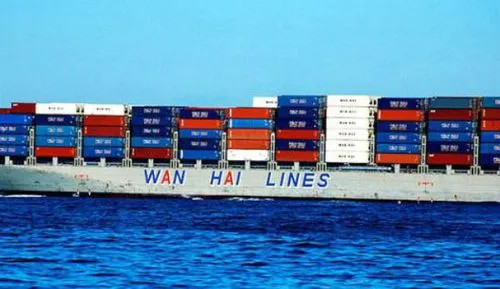What is the U.S. Express Line service and what are the U.S. Express Lines?
Definition of express boat
The selling point of express boats is timeliness. How is timeliness measured? From the shipowner's point of view, it is the time from ETD to when the container can be picked up at the destination port/yard. From the customer's point of view, it is the time from delivery/filling the container to the time when the goods are put into the warehouse at the port of destination or handed over to the courier company. This end-to-end service involves many aspects, and the shipowner has no way to control the overall situation. However, the time that can be extracted from the ship to the cabinet is the most critical period, and it is also the ability that the express owner/route focuses on building, which is the focus of this article.
What kind of boat can be called an express boat? There are narrow and broad definitions here. In a narrow sense, the express ship is a fast shipping schedule + priority fast service at both ends. The generalized express ship is that a certain section of the entire end-to-end process is faster than the ordinary route, thereby improving the overall timeliness.
Let's do a comparison. Take Shanghai to LA as an example, this is the current time limit for ordinary routes: port to port 15 days (except for the route that circles the earth a few times) + waiting time 20 days (except for more than 20 days) + ship operation 5 days + 7 days to mention the box = 47 days, which is close to 50 days. If it is counted from the time when the customer makes the container, plus the delay at the port of departure, 60 days is normal. If this time can be cut in half or more, in the current market environment, it can be called express boat service.

1. Matson Clippers;
2. ZIM (star) Clippers;
3. WHL (Wan Hai) Clippers;
4. EMC (Evergreen) Clippers;
5. CMA (CMA CGM) Clippers.
Here are a few things you need to know about shipping goods in the United States:
1. The information of the goods, including the mark, the number of pieces, the name of the goods, the weight, the maximum size, and the terms of transportation, etc., shall be filled in by the shipper, and the shipper is responsible for the contents filled in.
2. For dangerous goods or refrigerated goods, it is necessary to clearly fill in the transportation requirements such as the level of dangerous goods, the temperature and ventilation of the refrigerated goods.
3. Whether the goods can be transshipped or not, if it is not filled in, it will be regarded as a transshipment; if the freight prepaid or the delivery column is not filled in, it will be treated as prepaid; if the transportation terms are not filled in, it will be regarded as a CY-CY clause.
4. After the goods are booked, due to incorrect filling in the consignment note or incomplete information, or other reasons caused by the shipper, the goods cannot be shipped in time, the wrong destination, the wrong bill of lading cannot be settled, and the goods cannot be picked up, etc. All liabilities and risks arise , expenses (such as overdue container rental, storage fees, etc.) shall be borne by the shipper.
Remarks: The above content is only an internal opinion and is for reference only.





